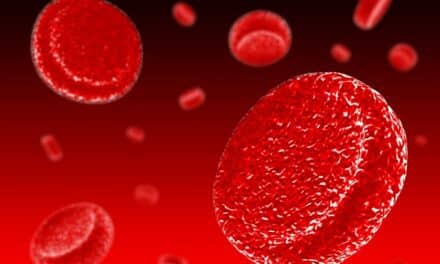Though a half-century of Pap testing has dramatically reduced cervical cancer in the United States and other advanced countries, limitations of the Pap test are driving the development of new products and new technologies for detecting human papillomavirus (HPV), the causal link to the second largest killer of women. Only breast cancer claims more women’s lives each year in the United States.
Of the estimated 230,000 women worldwide who die each year from cervical cancer, 90% live in developing countries. As effective as cytology has been, Pap testing suffers from several shortcomings. To be effective, it requires the collection of high-quality samples. Identifying cell changes that move from precancerous to cancerous is highly subjective, and the cytology method itself is very repetitive and can lead to other interpretive errors. It was concern about Pap readings that prompted CLIA to mandate rescreenings.
A Historical Perspective
Mark Stoler, MD, a professor of pathology and clinical gynecology at the University of Virginia Health Sciences Center, expects the Pap test to play a decreasing role in cervical cancer diagnostics in the years ahead. The Pap test was the best for a long time, and it succeeded in eliminating 75% to 90% of cases in at-risk populations. “It was great and its impact was amazing, but it was imperfect,” Stoler says. “There were no clinical trials a half century ago when the Pap test was devised. Its impact has diminished, especially over the last 10 years.”
According to Stoler, use of the liquid-based HPV DNA test in combination with the Pap smear has emerged as the standard for diagnosing risk of cervical cancer in women age 30 and older. The HPV test performs well, offers significantly enhanced sensitivity, and offers easier processing in today’s clinical laboratories.

Since the mid-1990s, liquid-based Pap tests have increased their market share from about 30% to nearly 90% today. “With a better-performing test, HPV screening may eventually be recommended every 3 years, not every year,” Stoler says. “That would reduce costs and provide savings that could be used to screen many more women who are 30 and over.”
Cost Issues In the UK
Liquid cytology is certainly seen as the way forward in the United Kingdom, primarily because it can be automated and therefore it will save vast amounts of government money, says Kevin Gaston, MD, senior lecturer on biochemistry at Great Britain’s University of Bristol and an expert on the molecular biology of HPV.
“This is very different from the case in the US where costs are distributed between various private concerns but ultimately covered by the patients and not by the government,” Gaston says. “Another advantage: Liquid cytology can also be very easily combined with HPV testing, and this again has great potential to save money.”
Digene’s HPV DNA Test
Gaithersburg, Md-based Digene Corp produces the only US Food and Drug Administration (FDA)approved HPV DNA test. The HPV test uses Hybrid Capture® 2 (hc2) technology to detect 13 clinically relevant high-risk HPV strains. It offers sensitivities in the 96% range, compared to 53% for conventional Pap screenings.
The HPV DNA test is a signal-amplified, nucleic acid test that generates standardized, objective results that physicians can rely on to assess patient risk for cervical intraepithelial neoplasia (CIN) and cancer. The test is used as a primary screening in concert with the Pap test, a pairing that is quickly emerging as the standard of care in cervical cancer screening, says Shelley Ducker, associate director of corporate communications at Digene.
First approved by the FDA in 1999 as a follow-up evaluation for women of any age with uncertain Pap results, the HPV DNA test in 2003 earned FDA approval for high-risk HPV screening, in conjunction with a Pap, for use in patient management associated with cervical cancer testing of women 30 and older.
Ducker says the HPV DNA test has reached an 18% penetration rate in the marketplace and a significantly higher rate in markets where Digene has invested in direct-to-consumer advertising. The HPV test has also been boosted by being included in cervical screening guidelines by the American College of Obstetricians and Gynecologists, the American Cancer Society, and the Association of Reproductive Health Professionals.
The HPV test/hc2 technology broke new ground on a number of fronts, Ducker says. With a typical Pap test, a lab tech visually examines a sample of cervical cells under a microscope to look for abnormal changes. No matter which Pap method is used, findings are inexact and always subject to human error in interpretation.
In contrast, the Digene HPV test’s advanced molecular technology detects the DNA of 13 high-risk strains of HPV, the cause of virtually all cervical cancer cases. One study found that for women 30 and older, an HPV test and Pap test offer sensitivity for high-grade cervical disease and cancer reaching as high as 100% when performed together, compared to 84% for liquid cytology alone, and 57.7% for conventional Pap alone.1
“Importantly, HPV testing provides the first objective measure for a woman’s risk of developing cervical cancer,” Ducker says. “Studies have shown that one in five women persistently positive for high-risk HPV will develop cervical disease within 3 years.” A related benefit: Digene’s new Hybrid Capture 4 systems are designed for simultaneous detection of multiple infectious agents and for genotyping of high-risk types of the human papillomavirus.
Also, Digene is developing a family of genotype products; the first one is now available as an analyte specific reagent (ASR) that detects types 16, 18, and 45. These most aggressive types are responsible for nearly 70% of cervical squamous cell carcinoma and cancer.
“As HPV testing is increasingly added to routine cervical cancer practice, we expect our product-development efforts to contribute to additional work demonstrating that rapid methods of genotyping can enhance patient care by allowing more precise risk stratification,” says Attila Lorincz, chief scientific officer and senior vice president for research and development at Digene.
For its lab customers, Digene R&D is developing a new sample prep processor that company officials say will dramatically cut the time and labor needed to process cell samples for HPV testing on its instruments. The sample prep processor will speed up the turnaround time for results and allow laboratories to accommodate increasing HPV test volumes. Also coming from Digene: a molecular diagnostic cystic fibrosis carrier screening test for obstetricians and gynecologists.
Cytyc’s ThinPrep Pap Test
Ellen Sheets, MD, chief medical officer at Cytyc, says her company’s ThinPrep® Pap Test is the only liquid-based cytology system approved by the FDA for HPV testing directly from the ThinPrep collection vial (using Digene’s Hybrid Capture 2 HPV test). Another benefit: ThinPrep is the only FDA-approved cytology system for chlamydia and gonorrhea testing directly from the ThinPrep collection vial.
“Our ThinPrep Pap Test is the standard of care for cervical cancer screening in the US,” Sheets says. “More than 70% of all Paps are ThinPrep Pap Tests. Since approval in 1996, more than 200 million have been processed worldwide.”
Cytyc followed the debut of its ThinPrep test by introducing its ThinPrep Imaging System, approved by the FDA in 2003. A fully integrated, interactive computer system, the imaging system assists cytotechnologists and pathologists in the primary screening and diagnosis of ThinPrep Pap Test slides.
According to Sheets, the Cytyc system combines breakthrough imaging capabilities with human interpretive expertise. The result, Sheets says, is more efficient, higher-performing cervical cancer screening. “To date, more than 350 imagers have been shipped to laboratories,” she says.
What should be emphasized is the need for regular Pap screening with the best cervical cytology available. Widespread cytology cut cervical cancer rates in the United States before reaching a plateau in the mid-1980s. “Interestingly, there has actually been a further reduction in the incidence of cervical cancer of more than 25% in the past decade, coinciding with the ThinPrep Pap test’s introduction,” Sheet says. “To date, there is actually no long-term data to demonstrate that HPV testing has resulted in a reduction of cervical cancer mortality or morbidity.”
Sheets says the HPV/hc2 test was approved using data combining it with conventional smear cervical cytology rather than the ThinPrep Pap Test; there was no assessment, she says, of whether hc2 conferred any advantage to the Imaged ThinPrep. Researchers evaluated whether hc2 would add to an imaged negative ThinPrep Pap Test in women over age 30.
“In fact, this study revealed less than a 4% chance of an imaged negative TP having a positive hc2 test. Most physicians appear to believe that such a rate of hc2 positivity is not a reason to add hc2 to an imaged TP,” Sheets says.
What about false negatives and false positives? The ThinPrep Imaging System has made significant strides in addressing these issues, while at the same time improving laboratory productivity and addressing the growing problem of a shortage of cytotechnologists, Sheets says. Cytyc has also worked to overcome access issues to its new test and system.
“We have converted 1 million underinsured or noninsured Pap tests to TP,” Sheets says. “We have also supported advocacy groups as they continue to bring the message to underserved women about how important cervical cancer screening is to their health and well-being.”
New Screening System From Diamics
Before CEO Peter Gombrich founded his Novato, Calif-based, privately held Diamics Corp, his work in diagnostics spanned nearly 3 decades. The company develops, produces, and markets molecular-based cancer screening and diagnostic systems aimed at increasing long-term survival rates through early detection.
The first Diamics offering – the C-Map™ system is a method for screening women for precancerous conditions of the uterine cervix in a manner that is both more accurate and less costly than the current screening methods, Pap and HPV testing, Gombrich says. The system includes the unique CerCol™ collector device. On the horizon are additional molecular-based cancer-screening tools for early detection of ovarian, lung, and breast cancers.
Compared to the traditional Pap smear and the new HPV test, the C-MAP screening system will offer a number of advantages, Gombrich says. By targeting a 98% sensitivity, the C-Map will be more accurate than Pap tests, offer higher 90% specificity, and cost less than current liquid-based Paps or individual ASCUS reflex (such as the HPV DNA test) while providing physicians the additional information they need to treat and manage patients.
Gombrich says examining an individual cell does not indicate the state of potential disease. He says the ability to analyze cells in their relationship to each other is the essence of fractional histology.
“In examining cells for cancer, two of the factors examined are apoptosis (normal cell death) and proliferation (cell growth). Too little apoptosis results in uncontrolled cell proliferation, namely, cancerous tumors,” Gombrich says. “C-Map uses biomarkers to deliver a ratio of apoptosis to proliferation, which can examine an area of cells, and by ratio, provide a result that can indicate whether the ratio is abnormal, or whether it is part of the normal cell life cycle.”
The company’s proprietary CerCol® cervical collection device, now under premarket-notification application, is designed to improve screening and reduce discomfort for patients while capturing mirror-image samples from 360° of the cervix’s endocervical canal, ectocervical area, and transformation zone. The added advantage of the CerCol device is that it can be used either with the C-MAP system or with standard liquid-based Pap tests.
According to Gombrich, driving the creation of the C-MAP technology is the recognition that hundreds of thousands of women in less developed countries could die every year because they have no access to screening. The cost of the Pap test and the infrastructure required to support it, including trained cytologists and fully equipped laboratories, is too high for the majority of people in the developing world, Gombrich says.
“Detected early and appropriately treated, cervical precancerous abnormalities have an excellent cure rate,” he says. “Unfortunately, the accuracy of cervical cytology is less than satisfactory, and the requirement for extensive laboratory infrastructure makes it expensive.”
The Diamics approach is based on the assumption that since cancer screening seeks to detect unsuspected cancers in the population, any test suitable for large numbers of healthy people should be relatively affordable, safe, and noninvasive with acceptably low rates of false positives. “When signs of cancer are detected, more definitive and invasive follow up tests are performed to confirm the diagnosis,” he says.
C-MAP trials are ongoing and are producing excellent results. Understanding that the use of the entire system in the United States will require many years, Diamics is planning to introduce the system to parts of the world where there is a major need for screening and adequate financial ability to purchase the equipment and serve patient needs.
“We are looking at parts of India, Latin and South America, and, in time, China,” Gombrich says. “These markets have a major need to screen and protect their female populations, and they can be entered prior to FDA approval.”
Reference
1. Clavel C, Masure M, Bory JP, et al. Human papillomavirus testing in primary screening for the detection of high grade cervical lesions: a study of 7932 women. Brit J Cancer. 2001;89:1616-1623.
Nicholas Borgert is a contributing writer for Clinical Lab Products.




